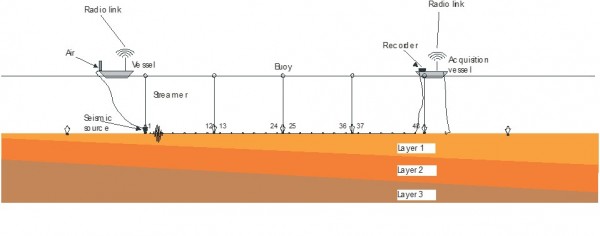In transition zones or close to the coast, directional drilling are used to install pipelines. The transitional zones have very variable water heights with sea conditions which do not allow the use of conventional geophysics (sub-bottom profiler, seismic reflection) to obtain soil information.
The equipment is deployed on the seabed and seismic shots are carried out along the seismic device.
The seismic data are recorded on board and an online quality control is carried out in order to modify, if necessary, on the acquisition parameters.
 Seismic refraction and UMASW using a static approach
Seismic refraction and UMASW using a static approach